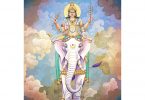Question: While reading Srimad Bhagavatam, there are mentions of Sati process, wherein the queen offers herself to self-immolate along with her dead husband. It was presented as a noble ritual of the Kshatriyas living in Dvapara Yuga. If I contemplate that act with both our modern philosophy and/or Krsna consciousness, I have a couple of conclusions which create certain unclarity. Obviously, from our history books at school, we know that Sati was discouraged by the British and that it is inhumane to expect a lady to immolate herself at her husband’s pyre. On a normal humanitarian grounds, this makes perfect sense. From a KC point of view, we understand that each soul is different and independent from the other. So, it doesn’t help to understand why the queens were going into the fire, knowing that they have to chant the Lord’s name and try to reach the spiritual world. Just getting into the fire, will lead them to a place wherever their husband reaches. This seems to defeat the whole purpose of spirituality. Secondly, these events take place in the presence of the Lord in Srimad Bhagavatam. I’m unable to understand as to why the Lord doesn’t discourage such an act? Kindly help me understand the deeper context of “Sati”
Answer by Romapada Swami: Srila Prabhupada mentions about Sati process in Srimad Bhagavatam as follows:
In Kali yuga, the Sati rite has become an obnoxious criminal affair because the ceremony was forced upon an woman unwilling to become Sati. In this fallen age it is not possible for any lady to follow the Sati rite as chastely as it was done by Gandhari and others of by-gone age. A chaste wife like by Gandhari would feel the separation of her husband more burning than actual burning in fire. Such lady could observe the Sati rite voluntarily and there was no criminal force by anyone. When the rite became a formality only and force was applied upon a lady to follow the principle actually it became criminal and therefore the ceremony was to be stopped by state law SB 1.13.58 Purport
In another purport, Srila Prabhupada mentions:
“A faithful wife cannot live without her lord, the husband, and therefore all widows used to voluntarily embrace the burning fire which consumed the dead husband. This system was very common in India because all the wives were chaste and faithful to their husbands.”
“Later on, with the advent of the age of Kali, the wives gradually began to be less adherent to their husbands, and the voluntary embrace of the fire by the widows became a thing of the past. Very recently the system was abolished, since the voluntary system had become a forcible social custom.”
“When Maharaja Paṇḍu died, both his wives, namely Kunti and Madri, were prepared to embrace the fire, but Madri requested Kunti to live for the sake of the younger children, the five Paṇḍavas. This was agreed upon by Kuntī at the added request of Vyāsadeva. In spite of her great bereavement, Kunti decided to live, not to enjoy life in the absence of her husband, but only to give protection to the children. This incident is referred to here by Vidura because he knew all the facts about his sister-in-law Kuntīdevī. It is understood that Mahārāja Pāṇḍu was a great warrior and that he alone, with the help of bow and arrow, could conquer the world’s four directions. In the absence of such a husband, it was almost impossible for Kuntī to live on even as a widow, but she had to do it for the sake of the five children.” SB 3.1.40 Purport
The practice of Sati not for the attainment of the Kingdom of God, or Vaikuntha; as you described, it was for the faithful and chaste wife to remain in the association of her husband in their next birth. Lower forms of dharma are there for those who wish to be elevated, whereas Srimad Bhagavatam’s singular emphasis is upon para-dharma, or absolute transcendence ~ SB 1.1.2. Until one receives the para-dharma message and can adhere fully to its message, dharma has its place in human society.
As far as the Lord discouraging the Sati practice (and for that matter, all other forms of lesser dharma), see BG 18.66.







